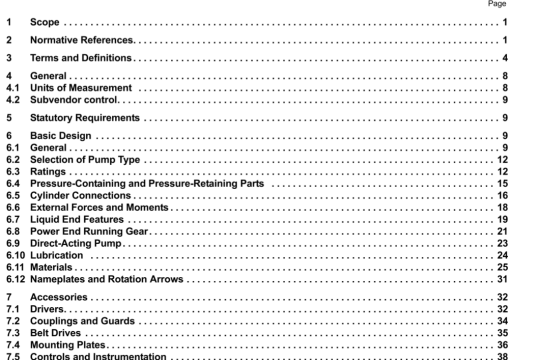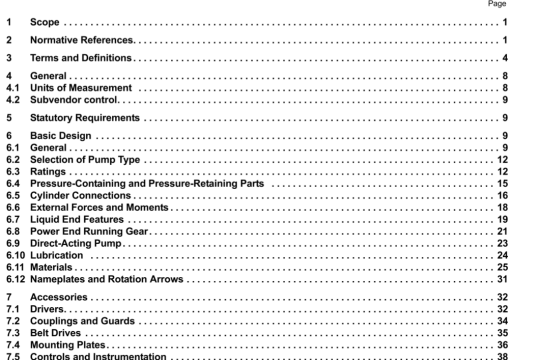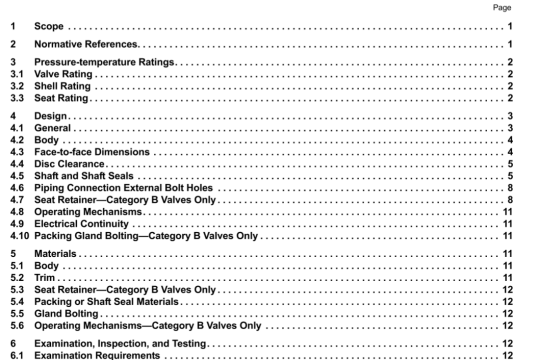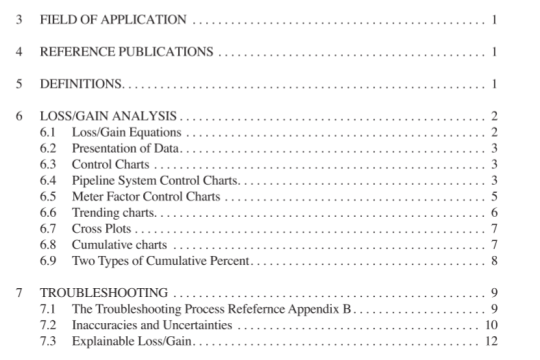API 17J:2008 pdf download
API 17J:2008 pdf download.Specification for Unbonded Flexible Pipe.
6 Design requirements
6.1 Loads and load effects
6.1.1 General
The pipe design is based on the information supplied by the purchaser (see guidelwies of Annex A), with reference to the requiements of Clause 5. All relevant information shall be defined in the design premise (see 9.2) mckiding design load cases. Results of the design load case analyses shall be included in the design load report (see 9.3)
6.1.2 Definition of load classes
6.1.2.1 Loads are classified as functional, environmental (external), or accidental, defined as follows,
a) Functional loads are all loads on the pipe in operation. includwig all loads that act on the pipe in still water except wind, wave or current loads.
b) Environmental loads are loads induced by external environmental parameters.
C) Accidental loads are loads caused by accidental occurrences.
Load classes and many subclasses are ks*ed in the left column of Table 5.
6.1.2.2 The design load cases shall be defined to analyse, as apphcable, the effect on the flexible pipe of functional, environment, and accidental loads. See ISO 13628-11 for guidelines on the analysis techniques to be used for the loads ven in Table 5.
6.1.3 Load combinations and conditions
6.1.3.1 The flexible pipe design shall be shown to meet the design requirements under the load combinations specified in 6.1 3. All loads, induding loads specified in 8.1.2.2. that act on the flexible pipe, shall be evaluated Variation of the loads in time and space. load effects from the flexible pçe system and its supports as well as environmental and soil condibons shall be analysed.
6.1.3.2 The design load conditions that shall be analysed are installation, normal operation (recurrent and extreme), abnormal operation and factory acceptance testing. Load combinations shall be as defined In the notes for Table 5 and the column headings in Table 6. Load combinations with a yearly probability of occurrence less than 1O- can be ignored, Factory acceptance test (FAT) load combinations shall be defined by the manufacturer based on the FAT procedures.
6.1.3.3 Design chedcs shall be carned out for any temporary conditions specified by the purchaser or the manufacturer. These shall be subject to the same design aitena as the design load condibons. as specified in Table 6.
6.1.3.4 The senultaneous occurrence of different load tombiratioris shall be defined in the manufacturer’s design premise (see 9.2). The probability of specific load classes or subclasses may be specified by the purchaser based on project-specific conditions. The probabilities of accidental and installation-related events shouk be specified by the purchaser (Tables 3 and 4). lIthe purchaser does not specify probabilities, the manufacturer shall propose the probabilities that are used to, the dividual events in the desigr premise.
6.1.3.5 The ciesign4oad cases analysed shall be denvel from the loading conditions specified in 6.1.2.2 and the cokimn headings in Table 6.
6.1.4Design-load effects
6.1.4.1In the pipe design, the manufacturer shall account for the effects of internal and external pressures.When the external hydrostatic pressure is included in the calculation of the design internal pressure for the pipe,then the manufacturer shall specify the water depth at which the design internal pressure is given. This shall alsobe specified in the pipe markings (see 11.1)
6.1.4.2 Hydrodynamic load effects shall be determined by validated and documented methods that accountfor the kinematics of the seawater and the interaction effects of the different environmental phenomena SeelSO 13628-11 for guidelines on anallysis methods.
6.1.4.3 For fatigue analysis,the distribution of loads over the service life of the pipe shall be based onmethods that include all load parameters. Simplified methods are acceptable if the resulting load distribution canbe shown to be conservative.
6.1.4.4 Any accidental loads or combinations thereof can damage or render unfit for service a flexible pipe.Load cases that include accidental loads (e.g., increased offsets due to anchor line or thruster failures) and do notviolate the requirements of Table 6, define a limit on the safe occurrence of the accidental loads. Some accidentalloads (e.g. fire and explosion) might not be easily analysed in terms of the requirements in Table 6. In such cases,testing shall be used to define safe working times of other limits associated with the accidental load.
6.2 Pipe design methodology
6.2.1lnitally and whenever revisions occur, the pipe design methodology shall be verified by an independentverification agent. The documentation submitted for verification of the design methodology shall include thefollowing, as a minimum:
a) description of theoretical basis, including calculaion procedures for the pipe design parameters required for
the design report,as specified in 9.4;
b)calculation method for all pipe layers and components;
c)verification of the thecretical basis with prototype tests. The verification shall include the capacity of all pipe
structural layers. Simplified conservative analysis methods for checking of non-critical layers, such as anti-wear layers, are acceptable if the method does not influence the reliability of the calculation of stresses in theother layers.




